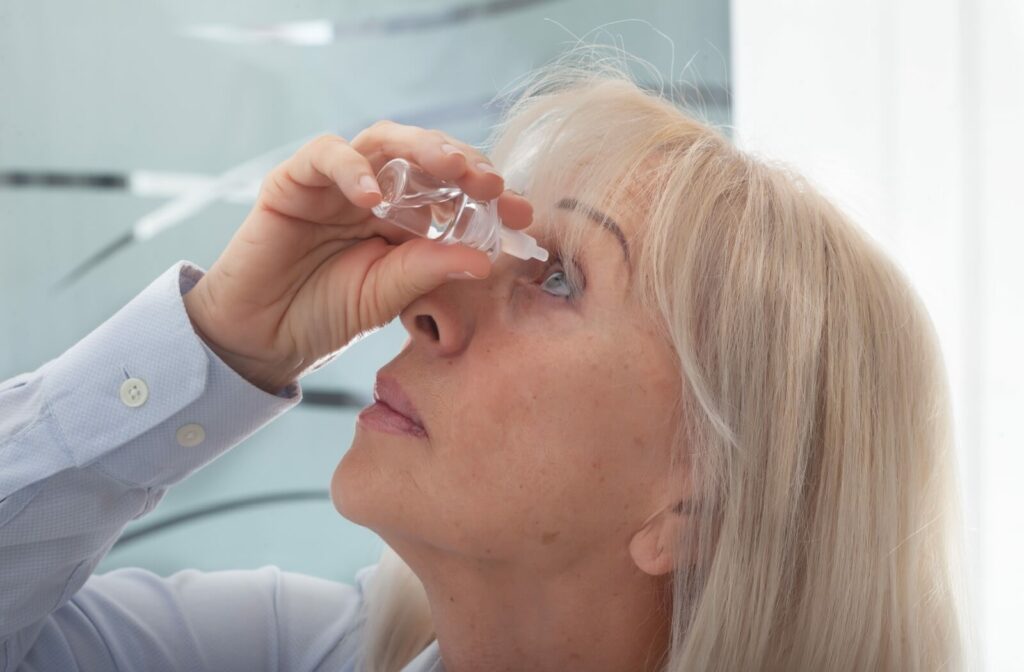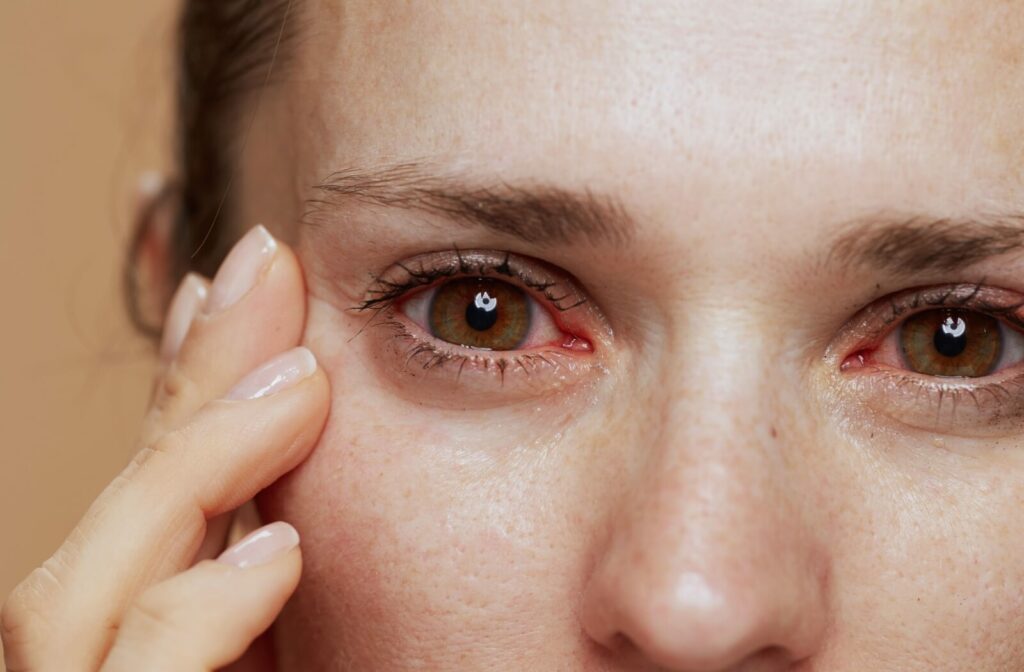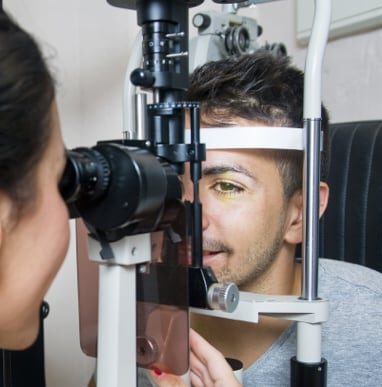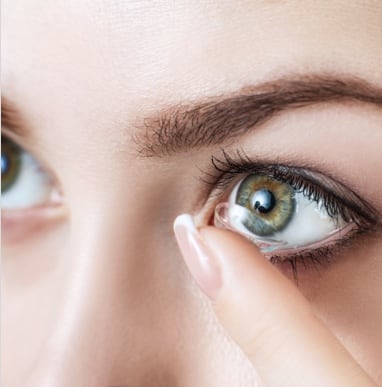Intense pulsed light (IPL) therapy treats dry eye disease, an ocular surface condition resulting from lack of lubrication. IPL can provide significant benefits over traditional dry eye treatment methods, such as:
- Improved gland function
- Improved tear quality
- Non-invasive solution
- Longer-lasting results
- Reduced inflammation
With a comprehensive eye exam and dry eye assessment, your eye doctor can recommend a treatment plan tailored to your specific needs and symptoms.
What Is Dry Eye?
Dry eye is a common ocular disease where the eyes fail to produce enough or good quality tears to maintain a smooth, moist eye surface. Tears are a mix of water, oil, and mucus that protect the eyes from foreign materials, lubricate the eyes, and help tears stick to the eye’s surface.
When the eye produces insufficient or poor-quality tears, the tear film lacks the components it needs, leading to increased evaporation, dryness, and other visual symptoms. This is known as dry eye. Types of dry eye include:
- Aqueous deficiency dry eye: Reduced tear production from the lacrimal glands in the eye.
- Evaporative dry eye: Deficient lipid layer from the meibomian glands in the eyelids.
Dry Eye Causes
Causes of dry eye include:
- Age
- Gender
- Medical conditions
- Medications
- Environmental factors
- Prolonged screen time
- Long-term contact lens wear
Dry Eye Symptoms
Dry eye symptoms can vary from mild to severe and significantly affect one’s quality of life. Common symptoms of dry eye can include:
- Irritation
- Scratchy feeling in the eye
- Stinging or burning sensation
- Blurred vision
- Light sensitivity
- Redness
- Excess watering
Diagnosis & Treatment for Dry Eye

Diagnosing dry eye will begin with you discussing your medical history and symptoms with your eye doctor. Once a baseline is determined, your doctor will perform an exam by assessing your tear film, measuring how fast your tears evaporate, and capturing images of the eye to determine the underlying cause of your dry eye.
Meibomian gland dysfunction, an underlying cause of dry eye, occurs when the meibomian glands in the eyelids that secrete the oil in tears become blocked. Without the oil layer in the tear film, your tears evaporate more quickly, leading to severe dry eye symptoms.
Managing and treating dry eye involves several approaches, including:
- Artificial tears to increase lubrication.
- Warm compresses to help with oil flow.
- Prescription eye drops to increase natural tear production or reduce inflammation.
- Punctal plugs to prevent tear drainage.
- Eyelid hygiene to remove bacteria buildup.
- Lifestyle changes include taking screen breaks, eating a healthy diet, and changing your contact lens type.
While these treatment approaches can benefit many, they often offer temporary relief, and you may require frequent application, leading to frustration among patients seeking a more lasting solution.
What Is IPL Therapy?
IPL was initially developed for dermatological purposes but has found a unique application in treating dry eye. IPL is a light-based, non-invasive treatment that uses specific wavelengths of light.
What Happens During IPL Therapy Sessions
Undergoing IPL therapy is a straightforward process that involves minimal discomfort. During the IPL procedure, you’ll have protective eyewear to safeguard your eyes from the light pulses.
After applying a gel to the treatment area, a handheld device emits light pulses around the eyes to help unclog blocked meibomian glands. The light usually feels like a warming sensation. Once the session is over, your eye doctor may express oil from the glands to stimulate oil production and flow.
You can return to your daily activities as there is no downtime following the procedure. You can typically see improvements after the first or second IPL treatment. However, you may still require multiple sessions over a few weeks or months. Your eye doctor may recommend other treatments, such as artificial tears, between your IPL sessions to maintain eye health and lubrication.
Benefits of IPL Therapy for Dry Eye
IPL has several advantages over traditional treatments, including its ability to address the root cause of dry eye and provide more durable results. IPL targets and reduces inflammation in the meibomian glands around the eyes, improving gland function and tear quality.
Ideal Candidates for IPL Therapy
It’s essential to consult with your eye doctor to determine if IPL therapy aligns with your specific condition and medical history. The ideal candidates for IPL therapy are those who:
- Have chronic dry eye symptoms that have not responded well to conventional treatments.
- Exhibit signs of meibomian gland dysfunction.
Long-Term Relief from Dry Eye
When dry eye disease affects daily life and quality of life, consider IPL therapy to help provide longer-lasting relief by addressing the underlying cause of your dry eye symptoms and vision discomfort. Since your eye health and dry eye are unique, a one-size-fits-all approach won’t work. Book an appointment with Vision Care Center for a custom treatment approach using IPL therapy and other treatments specific to your needs.












